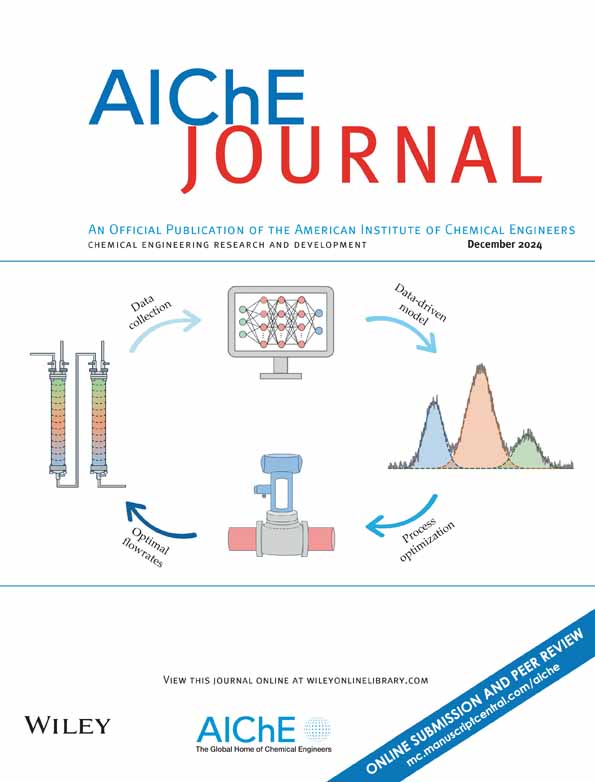构建锂离子电池电极浆料微流变模型用于涂层窗口预测
IF 3.5
3区 工程技术
Q2 ENGINEERING, CHEMICAL
引用次数: 0
摘要
锂离子电池电极浆料的组成决定了其流变性能,对镀层过程中的缺陷控制和最终电极微观结构有重要影响。由于浆体组成的复杂性,很难通过实验分析确定配方与流变性能之间的定量关系。在此基础上,建立了基于电极浆料微观特性的剪切流变模型,基于浆料成分预测的黏度与实验测量结果一致。结合二维相场模型和解析模型对电极浆料的涂覆性能进行了评价,并分析了浆料粘度与稳定涂覆窗口的关系。本研究为电极浆料的配方设计和镀膜工艺的优化提供了理论指导,对提高锂离子电池的制造水平具有现实意义。本文章由计算机程序翻译,如有差异,请以英文原文为准。
Constructing micro-rheological model for lithium-ion battery electrode slurry for coating window prediction
The composition of lithium-ion battery electrode slurry determines its rheological properties, which have a significant impact on defect control during the coating process and the final electrode microstructure. Due to the complexity of slurry composition, it is difficult to determine the quantitative relationship between the formulation and rheological properties through experimental analysis. Herein, a shear rheological model based on the microscopic properties of electrode slurry was proposed, and the predicted viscosities based on slurry compositions were consistent with experimental measurements. Furthermore, the coating performance of electrode slurries was evaluated by combining a two-dimensional phase-field model and an analytical model, and the relationship between slurry viscosity and stable coating window was analyzed. Our work provides theoretical guidance for the formulation design of electrode slurry and the optimization of the coating process, which has practical significance for improving the manufacturing of lithium-ion batteries.
求助全文
通过发布文献求助,成功后即可免费获取论文全文。
去求助
来源期刊

AIChE Journal
工程技术-工程:化工
CiteScore
7.10
自引率
10.80%
发文量
411
审稿时长
3.6 months
期刊介绍:
The AIChE Journal is the premier research monthly in chemical engineering and related fields. This peer-reviewed and broad-based journal reports on the most important and latest technological advances in core areas of chemical engineering as well as in other relevant engineering disciplines. To keep abreast with the progressive outlook of the profession, the Journal has been expanding the scope of its editorial contents to include such fast developing areas as biotechnology, electrochemical engineering, and environmental engineering.
The AIChE Journal is indeed the global communications vehicle for the world-renowned researchers to exchange top-notch research findings with one another. Subscribing to the AIChE Journal is like having immediate access to nine topical journals in the field.
Articles are categorized according to the following topical areas:
Biomolecular Engineering, Bioengineering, Biochemicals, Biofuels, and Food
Inorganic Materials: Synthesis and Processing
Particle Technology and Fluidization
Process Systems Engineering
Reaction Engineering, Kinetics and Catalysis
Separations: Materials, Devices and Processes
Soft Materials: Synthesis, Processing and Products
Thermodynamics and Molecular-Scale Phenomena
Transport Phenomena and Fluid Mechanics.
 求助内容:
求助内容: 应助结果提醒方式:
应助结果提醒方式:


